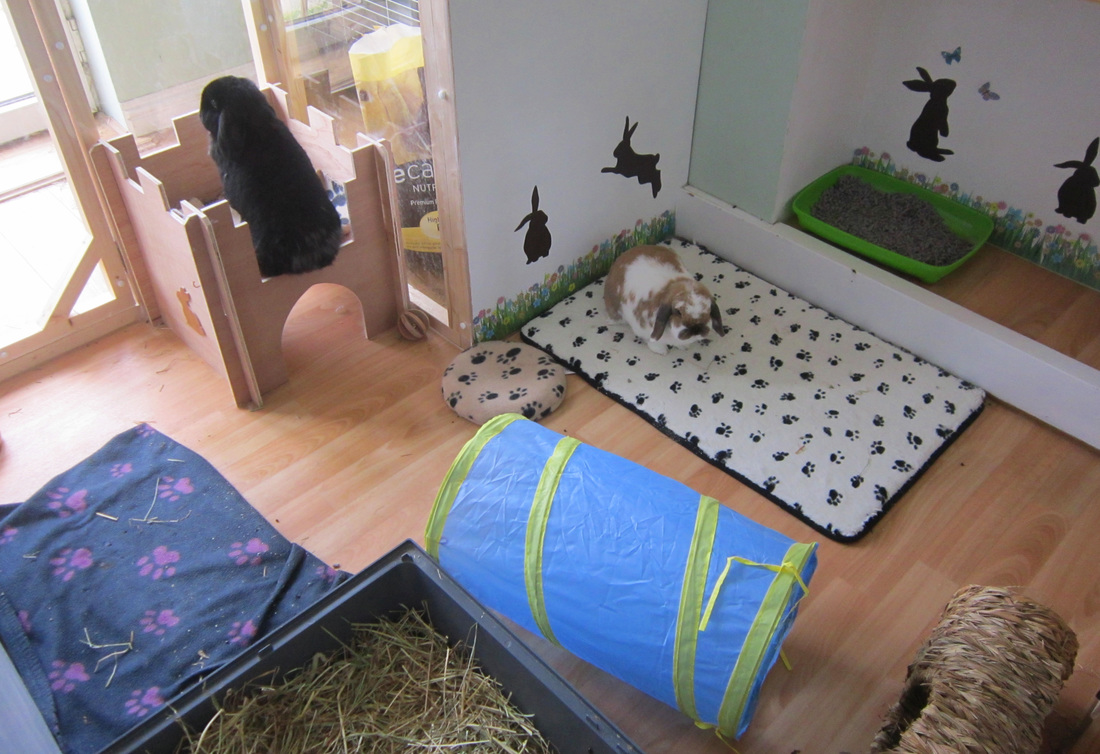Indoor Buns

Setting Up Inside
Bunnies make great indoor pets. They can clean animals and can be litter trained. You can set up for bunny in either a large cage or play pen in the corner of a room. The bunny space should include a litter tray, toys and somewhere to hide. A hay feeder will help keep the hay supply fresh and (mostly) tidy. Fresh water should also be available. Mats at the bottom of the cage will provide a waterproof surface that protects your carpets and is safe for little bunny feet.
–
Run Time
Bunny will need time out of the cage/ corner to fun free and to socialize with you. Bunnies are most active in the early morning and evening so these are the best times to allow them out to play. Bunnies need at least 2-4 hours per day to run free. If you have areas of your house that you don’t want your bunny to go, you can use baby gates to block off access.
Some people successfully teach their bunny to walk on a harness. This means that bunny can go outside to play in the park if no garden space is available.
–
Chewing
Bunnies love to chew things. Their teeth grow continuously and need to be worn down on sticks and dry leaves. If you don’t supply enough chew toys to your bunny, you may find that the legs of your furniture gets chewed. Bunnies also love to chew books and cables (particularly phone chargers). You cannot train your bunny to stop chewing but you can bunny-proof your house and provide your bunny with good supervision during play times.
–
Litter Training
Not all buns will have perfect litter manners but most buns can be trained to use a tray for urine. It is easiest to train a sterilized bun. This is because buns, like other animals, use their wee and poop to mark territory. Sterilizing decreases hormones and makes your bun less likely to feel the need to mark.
Set up your litter tray with newspaper at the bottom, a layer of Kitty Eco-Pellets or other non-toxic litter and oat hay on the top. The oat hay encourages the bun into the box. They tray can be a plastic kitty box or a recycled cardboard box (disposed of at the end). Place your litter tray in a corner as buns like corner toilets. You can pick up any poops in the house and put them in the box also. If your bun chooses a different corner, move your litter tray, or make a second litter tray. Wipe up any wees out of the tray with toilet paper and put that in the tray. Buns like to wee on top of old wee smells so the paper in the tray will help. You will also need to get rid of the wee smell on the floor. Use vinegar to take the smell away. It is also a good disinfectant. Wee stains on soft furnishings can be cleaned with bicarb and vinegar.
Very young buns will take longer to train but older buns should train in just a few days. Training may break down if you introduce your bun will feel the need to mark territory.
–
Photo: A great example of an indoor bunny habitat (unknown photographer)
